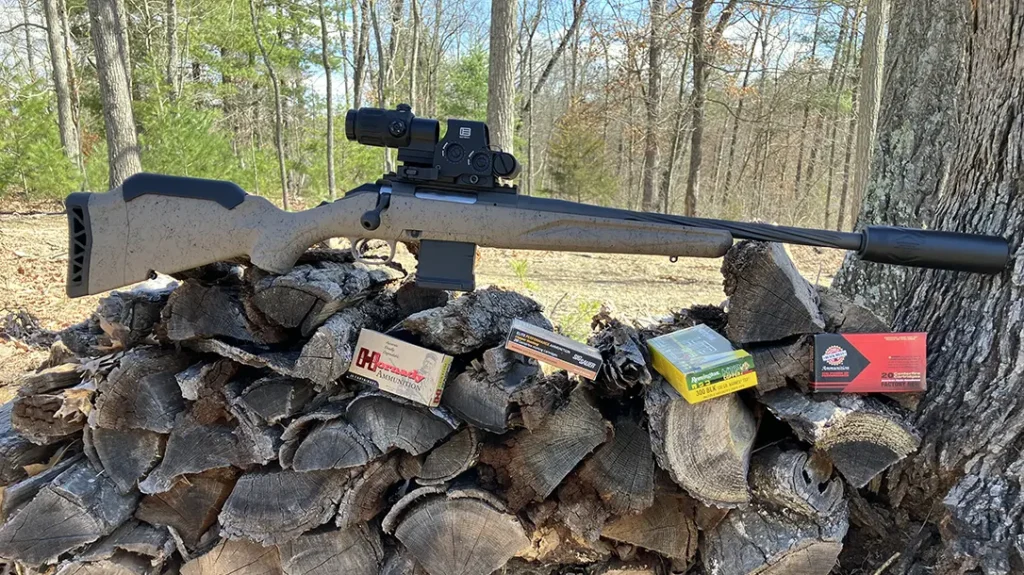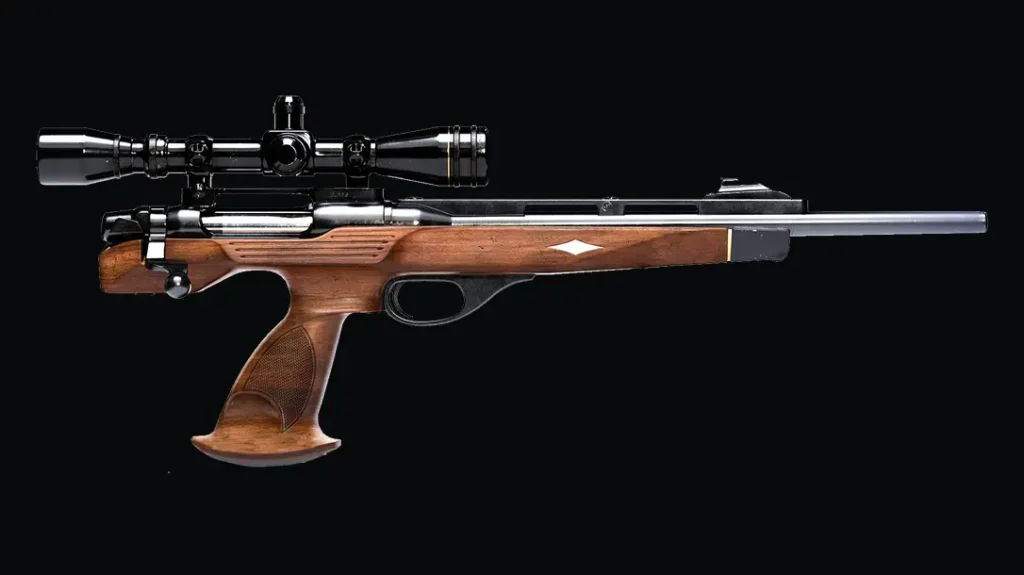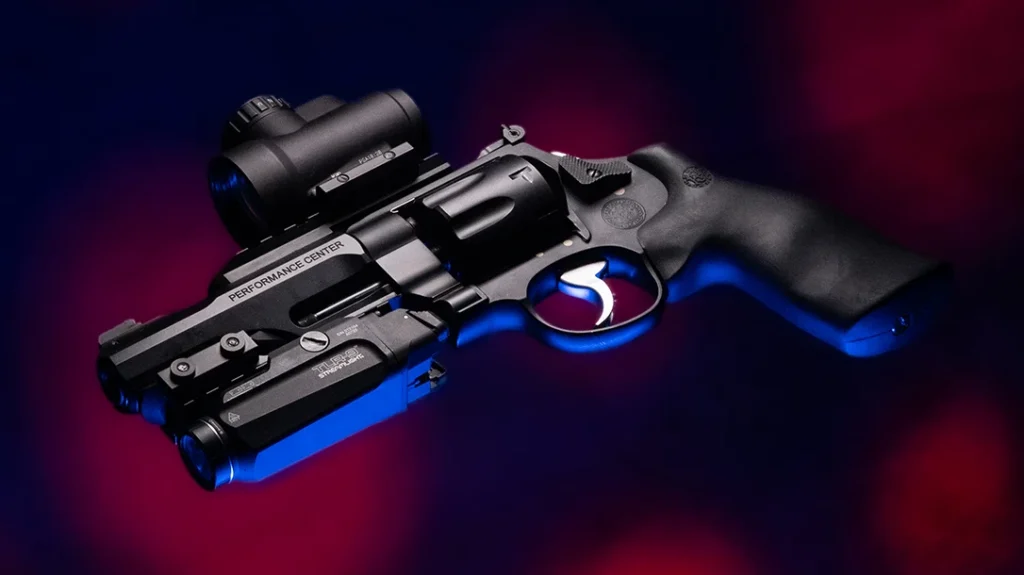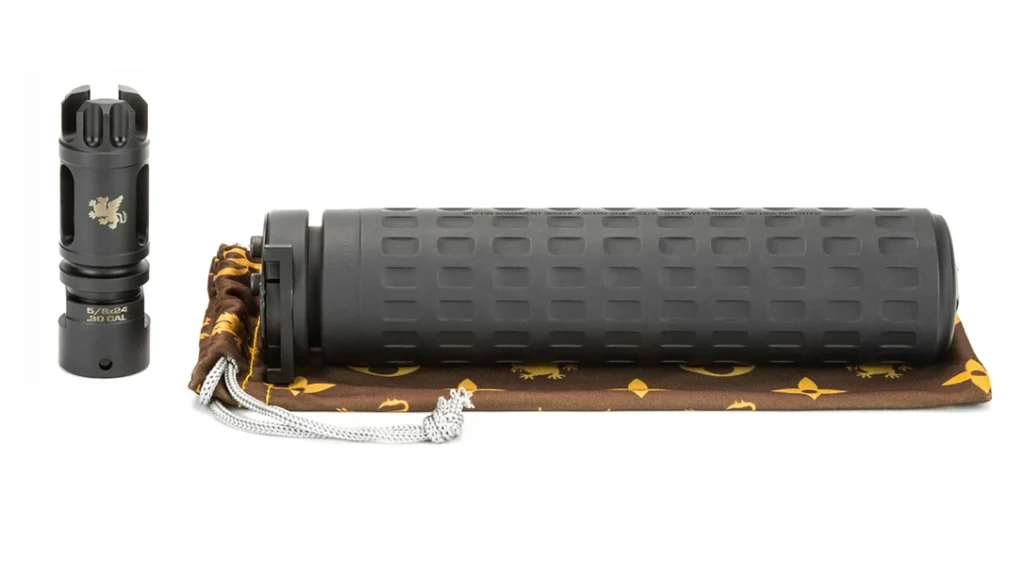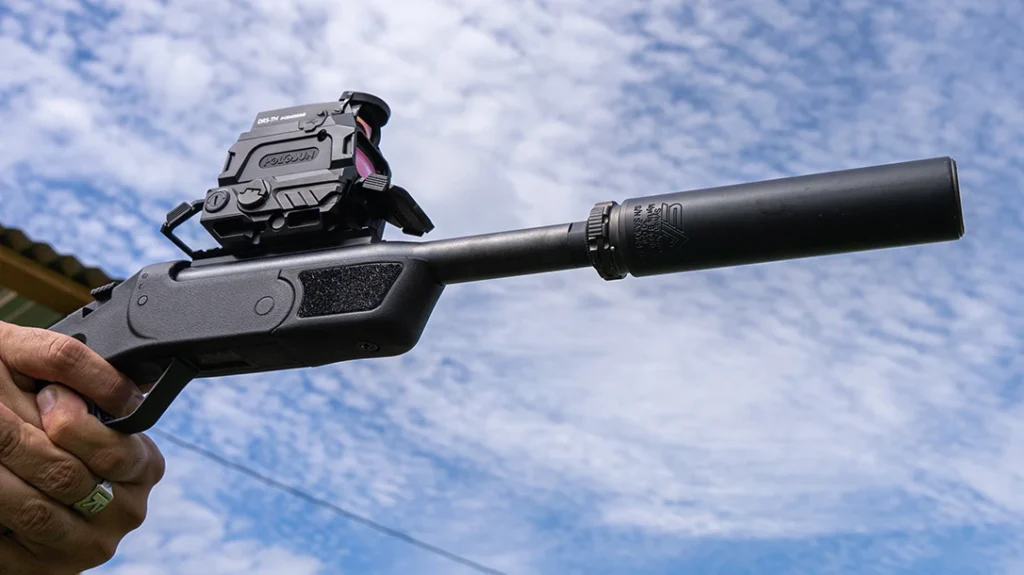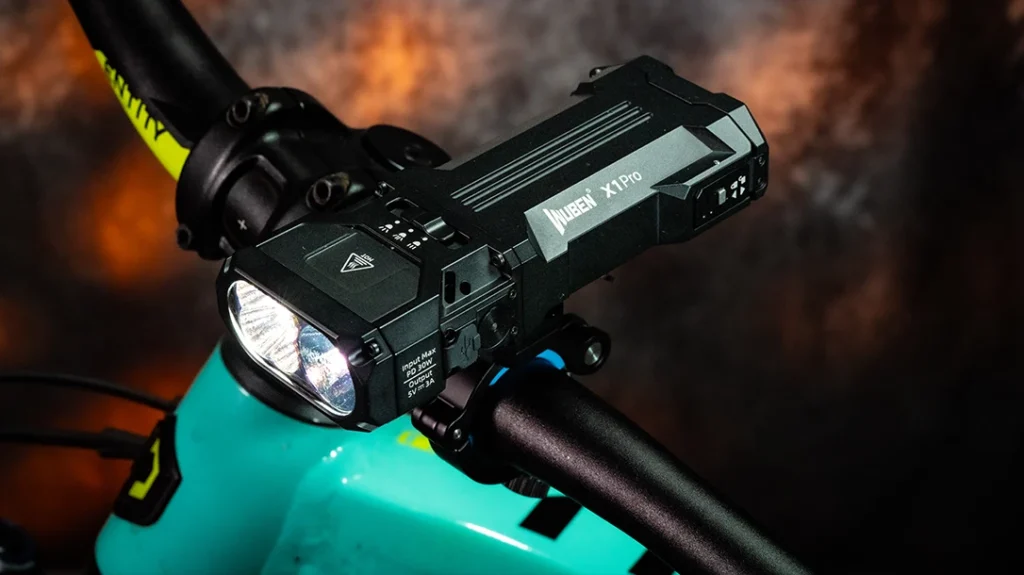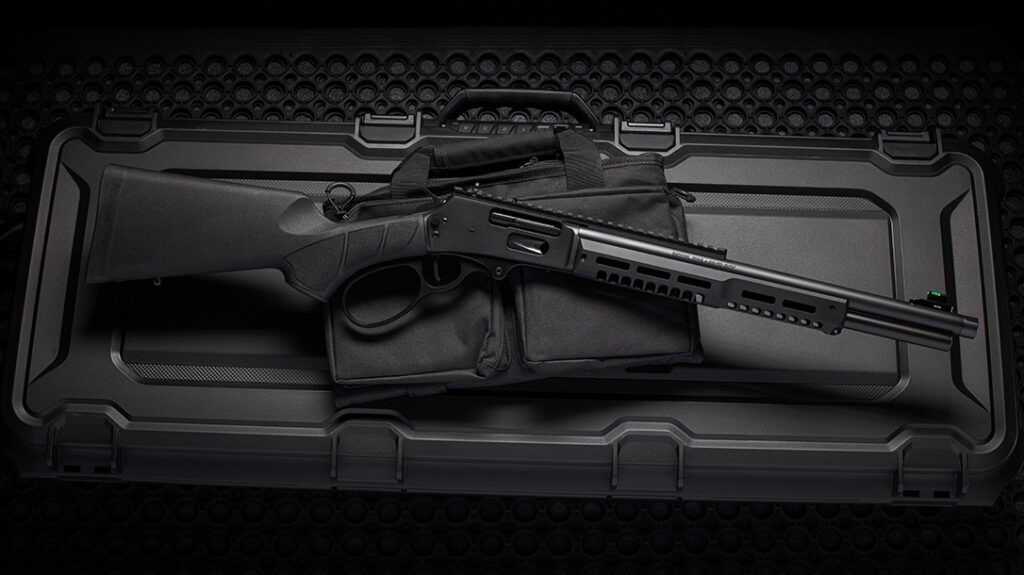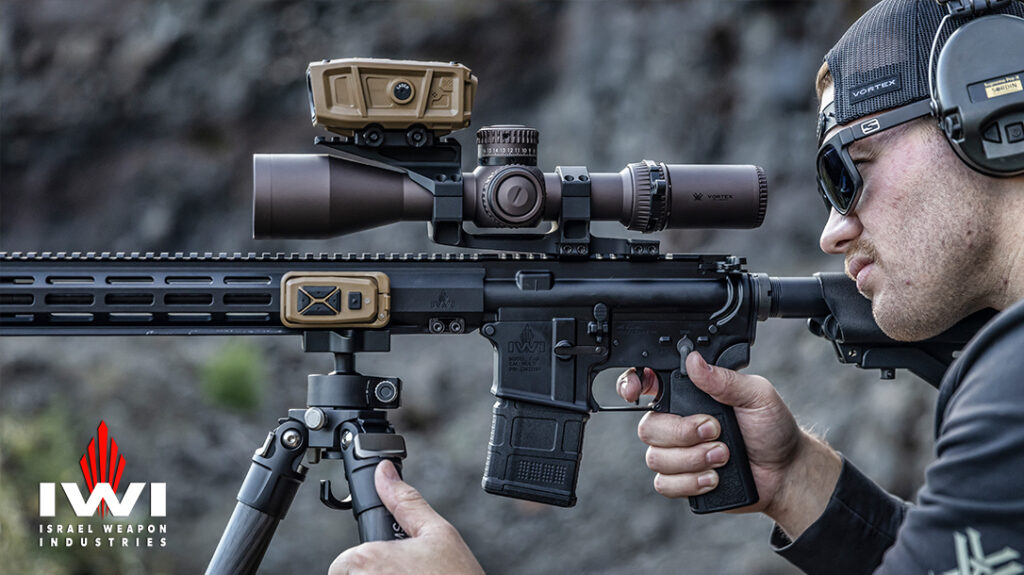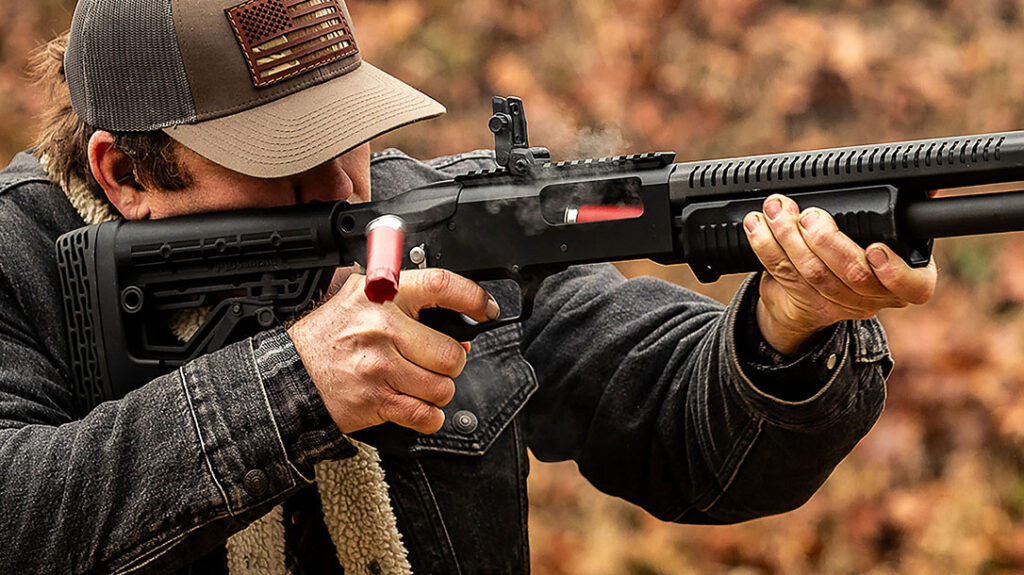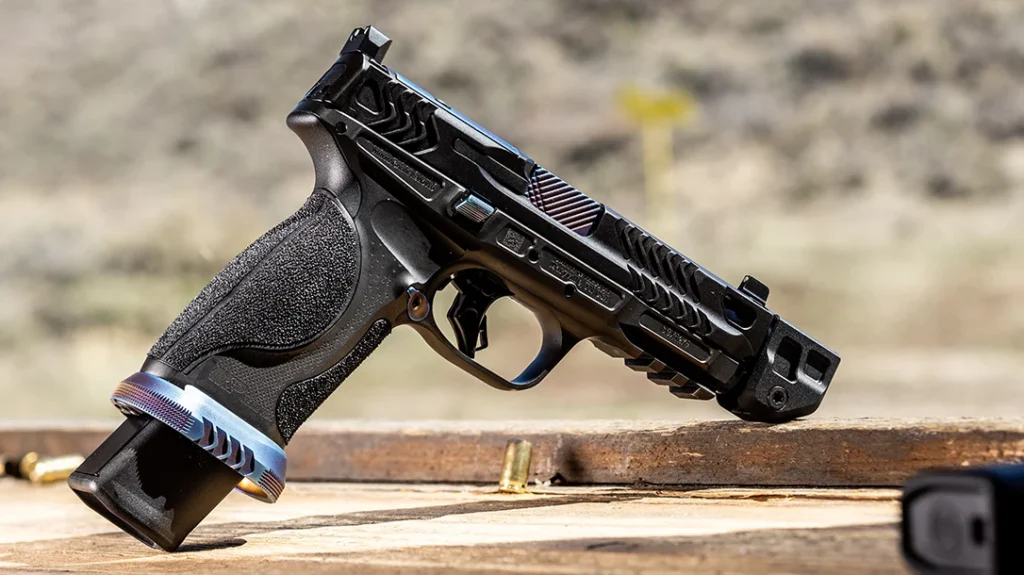Tisas’s PX Series pistols have been available for some time now, in both 9mm and 5.7×28 calibers. The lineup includes carry and competition models, as well as tactical versions with threaded barrels for mounting suppressors. As the PX Series pistols were further improved, Tisas began making them optic-ready straight from the factory, providing end consumers with more options tailored to their needs and preferences. Now, Tisas has taken the game to a whole new level with a redesign of the PX-9 pistol called the Tisas PX-9 2.0 Gen 3 Duty Comp. Tisas sent me one to review before the launch, and it’s a winner right out of the box.
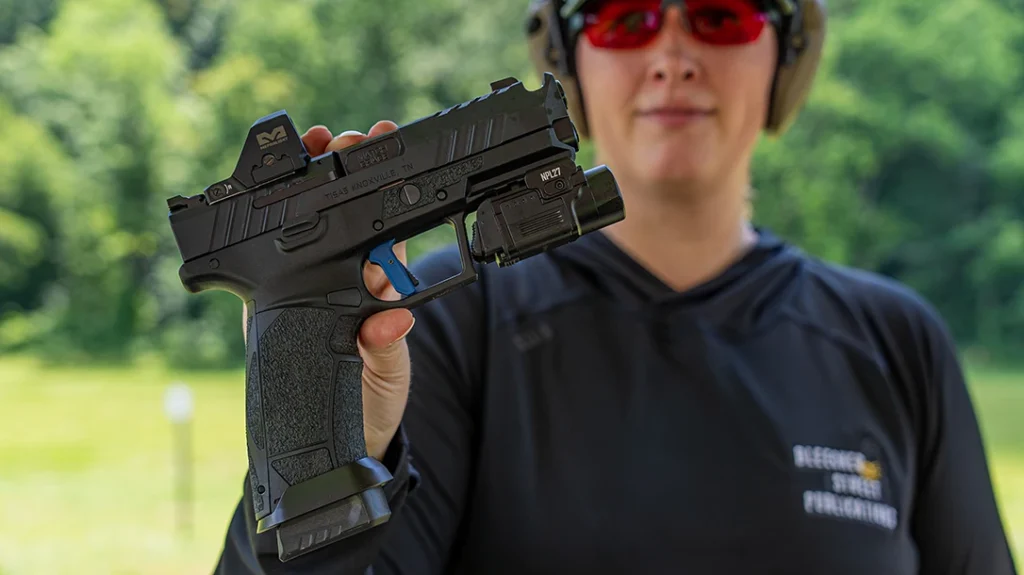
If you’re not familiar with the Tisas brand, it is a Turkish manufacturer that specializes in producing 1911-style pistols, as well as the PX series. Tisas USA is the importer, located in East Tennessee. I own a few Tisas guns and other Turkish-manufactured pistols, and I must admit that I’m a fan of these imported firearms. The value of the guns for the price point is what truly impresses me about Tisas. Every time I hear the MSRP of one of their guns, I’m confused as to how they make money. That said, let me tell you about the new PX-9 2.0 Gen 3 Duty Comp pistol at a price point that seems unreal.
Advertisement — Continue Reading Below
What’s New On The Tisas PX-9 Duty Comp?
I must start with the biggest upgrade to the PX-9, and that is the all-new slide and barrel design on the Duty Comp pistol. The barrel is ported at the end to function as a compensator, mitigating muzzle rise and felt recoil. Even though the barrel length is only 4.11 inches, the compensator makes this gun feel as if you’re shooting a full-size pistol with a 5-inch barrel.
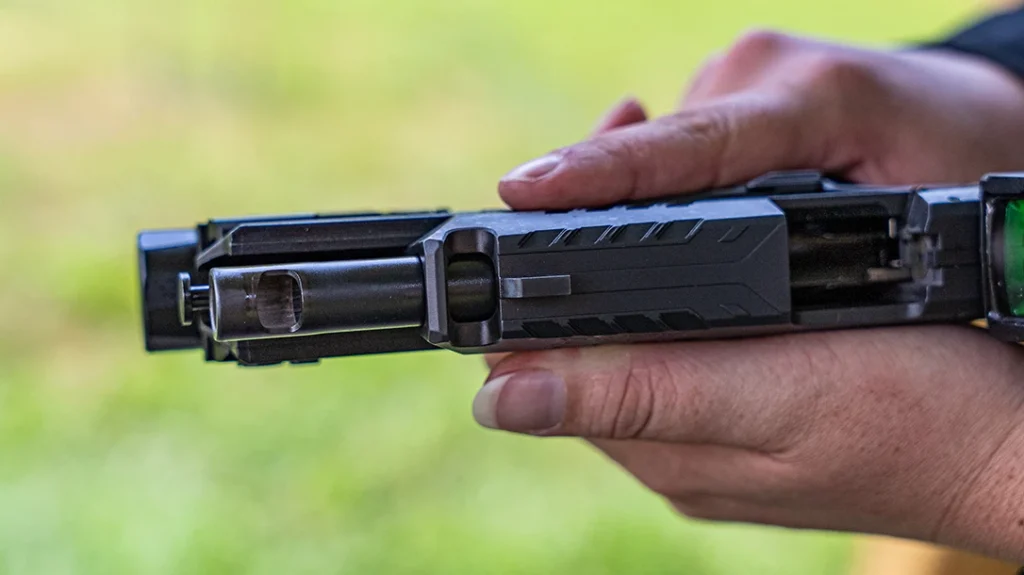
Out of curiosity, I shot this pistol alongside the Canik SFx and SAR 9 pistols. These guns are not compensated or ported, and both feature a 5.2-inch barrel. Because all three of these guns are Turkish-made and almost at the exact same price point, I felt it somewhat fair to compare them. What is unfair is to put a compensated or ported pistol against one that isn’t. It makes a big difference, especially on polymer-framed pistols. It wasn’t a surprise to me that, out of the three, the PX-9 shot the flattest with the least muzzle rise, which made it faster to shoot follow-up shots.
Advertisement — Continue Reading Below
Newly Designed Take Down Lever
The other upgrade to the PX-9 pistol is a new design for the take down lever. This change alone improved the ergonomics of the gun. While this lever serves as the starting point for disassembling the gun, it also functions as a thumb rest. Tisas added texturing to the take down lever/thumb rest intentionally, so the shooter knows when their support hand thumb is gripping the gun correctly. I call this an indicator point that helps me confirm my grip is in the right spot. Of course, the added texture also makes it easier to rotate the lever when you want to field strip the pistol.
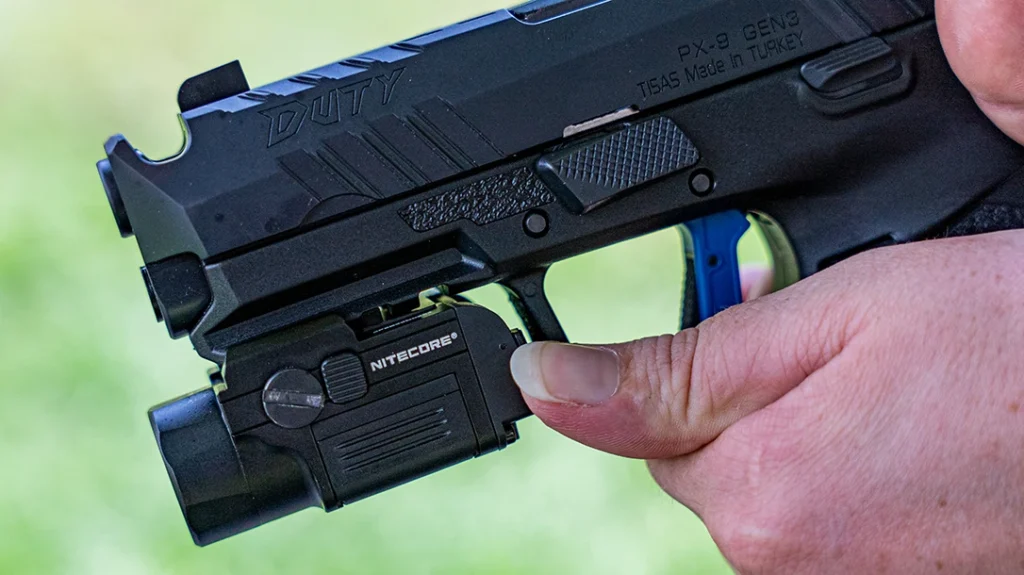
Adding Light/Laser
The PX-9 Duty Comp is still outfitted with a Picatinny rail for compatibility with a light or laser. Tisas ships this pistol with an IWB trigger guard style holster, which is great if you’re looking for a carry gun right out of the box. Once you mount a light or laser to the gun, it will no longer be compatible with the included holster.
Advertisement — Continue Reading Below
I mounted the Nitecore NPL27 light to the PX-9 Duty Comp, adding 2.57 ounces to the gun’s overall weight. This was the first time I’ve ever used a Nitecore light, and I was most impressed by the battery design. You can recharge the battery without having to remove the entire light from the Picatinny rail, and no tools are required. At the bottom of the light, there is a battery latch lock. When you pull down on the latch, the battery slides out horizontally. Nitecore includes a magnetic charging cable, and the battery has four power indicators to indicate when it’s fully charged. On the low setting, it emits 160 Lumens and on high, 650 Lumens. The dual tail buttons allow for use by both right-handed and left-handed shooters.
RMR Footprint Optics
The Duty Comp comes cut from the factory for use with RMR footprint optics. The RMR cover plate, when removed, does not remove the rear sight. With the ability to direct mount an RMR footprint optic, you can co-witness most red dot optics with the stock iron sights on the gun.

Advertisement — Continue Reading Below
I mounted the Meprolight MPO-F open emitter pistol sight to the PX-9 2.0 Gen 3 Duty Comp. Because the optic is designed with the RMR footprint, there was no need for an aftermarket optic plate. This optic is ideal for this competition pistol because it features a multi-reticle design, allowing the shooter to select the reticle pattern that best suits their needs. The reticle options are a 3 MOA dot, a 33 MOA bullseye, or a 33 MOA ring. There are 10 daylight settings and two night vision settings, with easy-to-use up and down arrows on the side of the optic for adjusting. It runs off a CR1632 battery, which is accessible on the side of the red dot optic, so there’s no need to remove the optic to replace the battery.
P226 Style Magazines
Tisas designed many of their pistols to be compatible with popular pattern magazines. The PX-9 Duty Comp maintains compatibility with P226-pattern magazines, ensuring no change from the original design. The gun ships with an 18-round and 20-round magazine, which are also compatible for use with the included mag well. The mag well that ships with the gun was the first part I installed on the pistol. You don’t have to remove anything to install it either. Slide it on and use the provided set screw to tighten it in place.
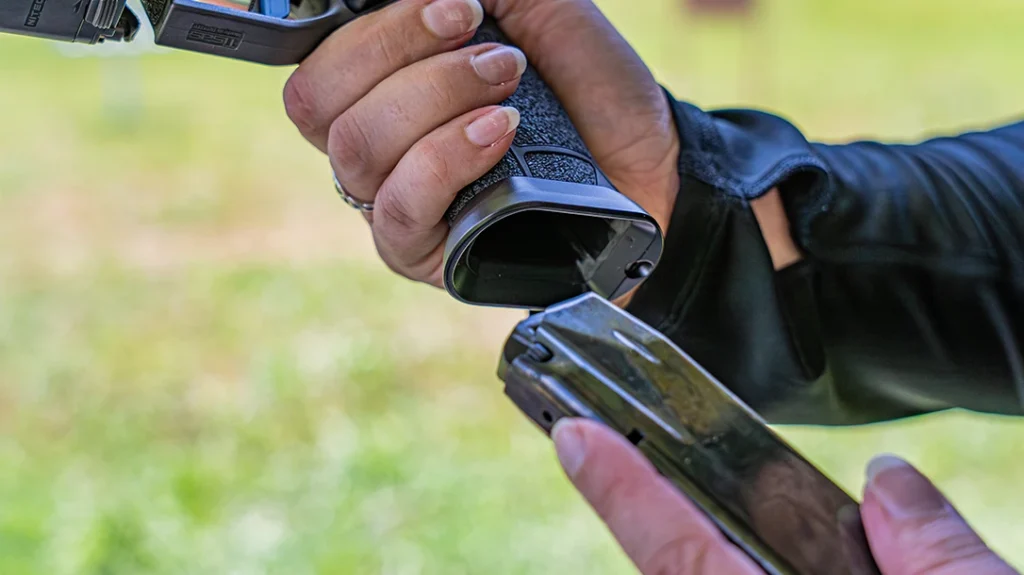
Advertisement — Continue Reading Below
Tisas PX-9 Duty Comp Shooting Impressions
My first magazine dump with the Tisas PX-9 2.0 Gen 3 Duty Comp gun was more than fun. I was surprised by how well the compensator worked and genuinely enjoyed the gun’s ergonomics. I was expecting more muzzle rise and felt recoil from the polymer-framed gun. If you watch the video review of this gun, you can see my genuine reaction to my first shots downrange.

I started with Super Vel’s 124-grain full metal jacket factory reload ammunition, as that’s usually my go-to range practice ammunition. Once I had shot a few magazines, I used this ammo to zero the red dot optic, preparing for accuracy and velocity testing. With any ported or compensated pistol, it’s a good idea to use faster-velocity ammunition. This is because faster-velocity ammo generates higher gas pressure, which is directed upward out of the compensator or port. Those gases are what “work” the compensator to drive the muzzle downward. Slower velocity ammunition will still function, but won’t just be slower, but have less effect on the compensator design.
Advertisement — Continue Reading Below
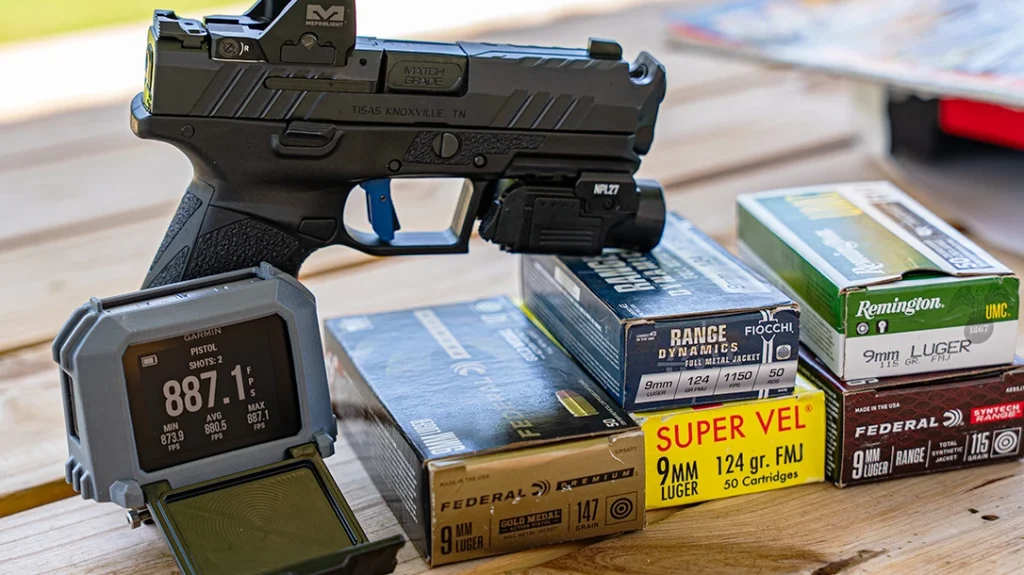
The ammunition I tested is all loads I would use for practice or competition shooting. I tested the Federal Syntech ammo, as well as various full-metal-jacket ammunition and flat-nose bullet loads. One load from Fiocchi did not register on the Garmin Xero chronograph, so I couldn’t track its velocity. Overall, the faster 115-grain ammunition performed the best in the Duty Comp pistol. The 147-grain ammunition shot great, but there was a noticeable increase in muzzle rise compared to the other loads.
Final Verdict
The Tisas PX-9 pistol fired all types of ammo without any failures to feed or eject. I didn’t clean or oil the gun when I took it out of the box, and I experienced zero malfunctions. Tisas has never surprised me when it comes to the performance of their pistols. They have always run reliably, even when I don’t maintain my guns as I should. This is a testament to the great products Tisas makes.
Advertisement — Continue Reading Below
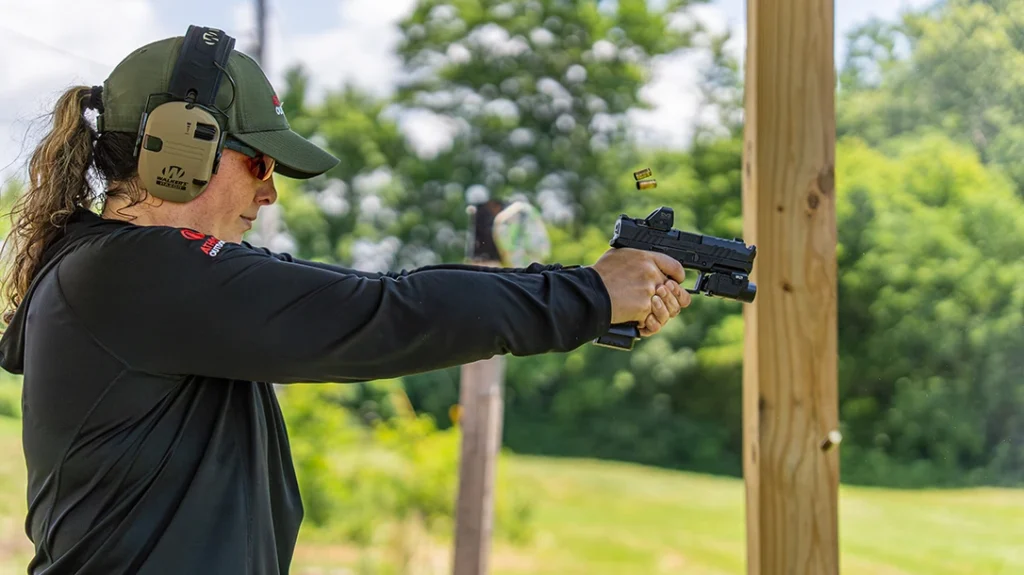
Tisas PX-9 Duty Comp Specifications
Caliber: 9mm
Barrel Length: 4.11 inches
Advertisement — Continue Reading Below
Action: Striker-Fired
Capacity: 18-round and 20-round magazines (Compatible with P226 pattern magazines)
Width: 1.33 inches
Height: 5.76 inches
Length: 7.27 inches
Weight Empty:
Sights: White Dot Front Sight, Drift Adjustable Serrated Rear Sight, RMR Optic Cut w/cover plate
Trigger: Aluminum Flat-Faced Tactical Trigger
Finish: QPQ on barrel and slide
Backstraps and Side Panels: S-M-L back straps and side panels (27 total grip configurations)
MSRP: $522.99

Tisas PX-9 Duty Comp Performance
| Remington UMC Handgun 115gr FMJ | |
| Average Velocity | 1,100 FPS |
| Best Group | 1.19 inches |
| Federal Syntech Range 115gr Syntech Jacket Flat Nose | |
| Average Velocity | 1,097 FPS |
| Best Group | 1.51 inches |
| Super Vel 124gr FMJ | |
| Average Velocity | 1,016 FPS |
| Best Group | 1.98 inches |
| Fiocchi Range Dynamics 124gr FMJ | |
| Average Velocity | N/A |
| Best Group | 1.83 inches |
| Federal Gold Medal Action Pistol 147gr FMJ Flat Nose | |
| Average Velocity | 880 FPS |
| Best Group | 1.97 inches |
(5 Rounds Shot at 15 yards and Chronographed using the Garmin Xero C1 Pro)
Extra, Extra! Hearing & Eye Protection
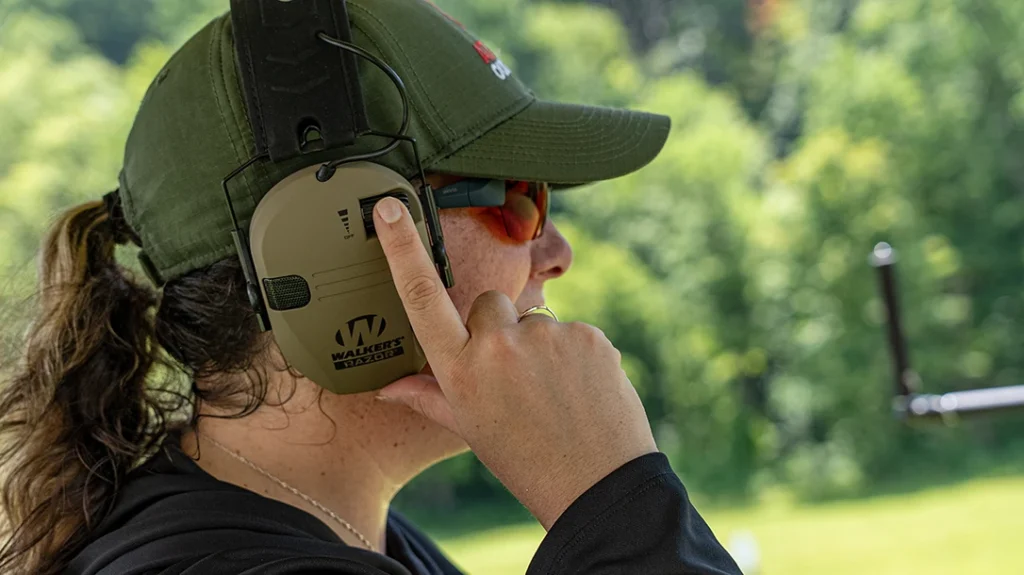
Every gun owner should own proper hearing protection for shooting firearms, as well as ANSI-safety-rated shooting glasses. A simple and affordable hearing protection option is the Walker’s Razor Slim Electronic Ear Muffs. They have a noise reduction rating of 23 dB with a 0.02-second reaction time to compressing sound. There is an audio input jack for use with traditional headphones. The ear cups and headband are comfortable and the slim design looks great on the range. What I love most about these is that they come in over 20 color options, including Pink Sprinkles, Mossy Oak Bottomland camo, Kryptek, and more.

The eyewear I used for use with the PX-9 Duty Comp and MPO-F red dot optic is the Ruby lenses from Hunters HD Gold. Hunters HD Gold eyewear features photochromic lenses that adjust to the level of UV light exposure, darkening or lightening accordingly. The Trivex lenses are more impact-resistant than regular plastic or polycarbonate lenses. These are ANSI safety-rated for use on a range, especially when shooting at steel targets. The Ruby lens tint is the best for use with red dot optics and red fiber optics, as they make the reticle “pop.”
